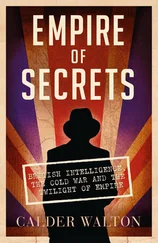At 0200 hours on 23 June the Stirling Castle , one of Durell’s squadron which had pushed up the river and now waited for Saunders and the main body of the fleet, anchored off the Île aux Coudres, heard the noise of cannon downriver. As dawn broke her log records that she ‘saw a fleet to the east’ sailing with the wind up the St Lawrence. The captain ordered his ship cleared for action and the shrill noise of the bosun’s whistle sent the watch below tumbling out of their hammocks and ‘to their quarters’. 102A flurry of signalling ensued and it was soon established that this was Saunders’ fleet. Gradually all the ships caught up and anchored in a protected bay on the north coast. The island was bleak; the 400-feet-high cliffs on its north side presented a defiant aspect to the ships as they sailed under them.
Quebec was about fifty miles ahead. But between the fleet and the French stronghold lay by far the most dangerous stretch of river. A passage through ‘the Narrows’ separated Île aux Coudres from the north shore and beyond that the St Lawrence was scattered with low lying islands and reefs just below the surface. A number of channels led through this natural barrier but they were ever-changing because of silting. The ebb tide tore down the river and in certain wind conditions could create steep, short waves that could swamp open boats and even small ships. They were a fearsome physical barrier. To make matters worse as the British fleet approached the heart of Canada, French intervention grew ever more likely. There was every possibility that the defenders of Quebec would take up positions to augment the natural barricades with ships, men and cannon. So far the enemy had hardly shown himself; the odd crack of a musket from the trees along the shoreline had been a fine gesture of defiance but held little menace. However, after years of desperate battles against the French and their Canadian colonists, no one in Wolfe’s army doubted that they would fight to the last extremity to protect their land from invasion. The all-too-visible progress of the fleet ensured that they would have plenty of notice of the British advance and although, as Knox commented, they saw no Canadians, they did see ‘large signal fires everywhere before us’. 103The French knew they were coming.
Конец ознакомительного фрагмента.
Текст предоставлен ООО «ЛитРес».
Прочитайте эту книгу целиком, купив полную легальную версию на ЛитРес.
Безопасно оплатить книгу можно банковской картой Visa, MasterCard, Maestro, со счета мобильного телефона, с платежного терминала, в салоне МТС или Связной, через PayPal, WebMoney, Яндекс.Деньги, QIWI Кошелек, бонусными картами или другим удобным Вам способом.











